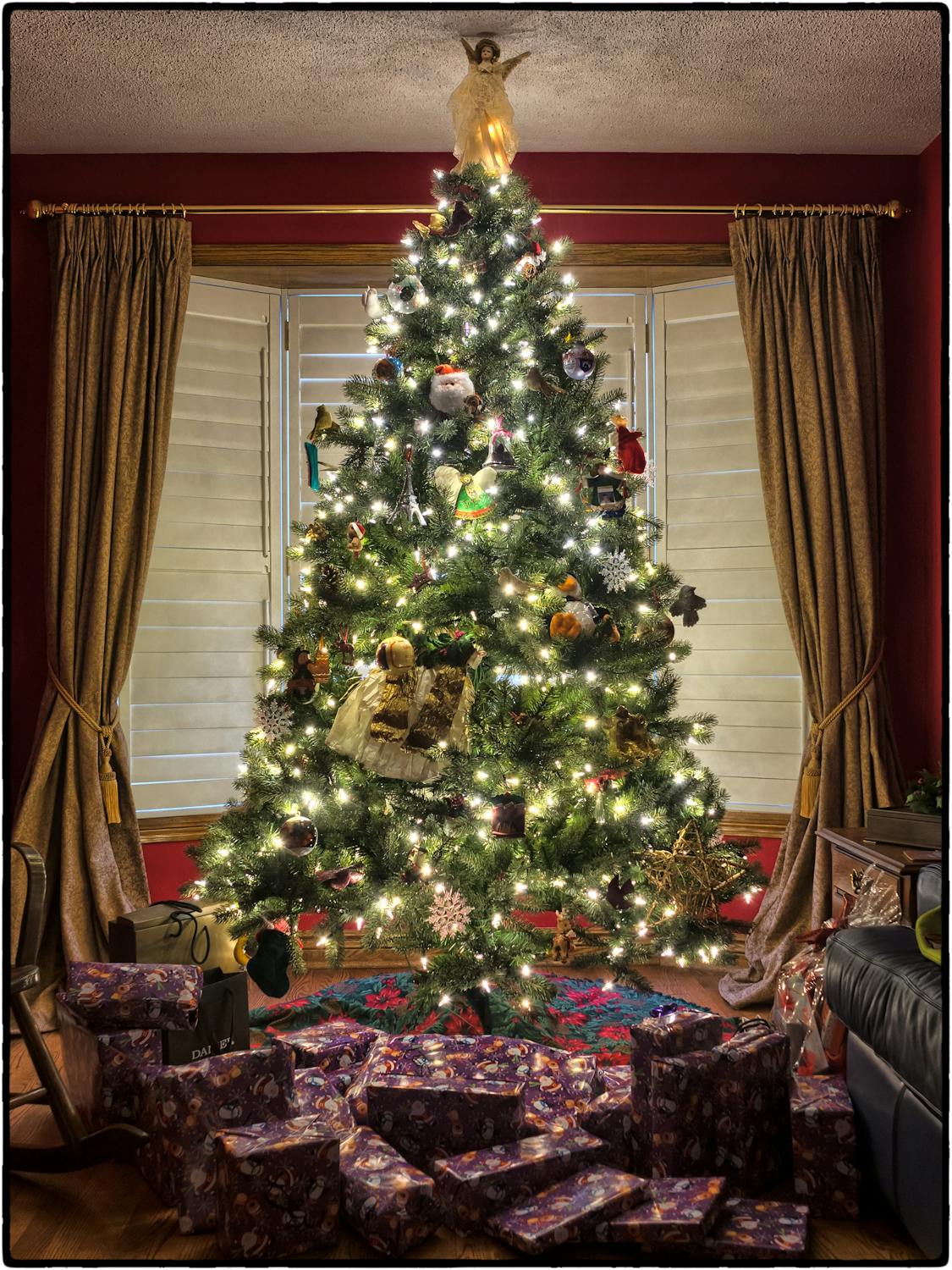Christmas is a time for traditions, for observing those time-honoured customs which our parents taught us and which we pass on to our children and grandchildren.
A central one is the Christmas tree, brightly decorated and with presents piled around its base. But when and why did we start bringing a tree into our homes as a way of celebrating Christmas?
 There is evidence in many cultures of people bringing evergreen sprigs and branches into their homes in the darkest winter months, possibly as a reminder that spring would return. But the tradition of an evergreen spruce or fir tree being cut and brought into the home specifically for Christmas seems to have emerged in Germany around the 15th or 16th century, among devout Christians.
There is evidence in many cultures of people bringing evergreen sprigs and branches into their homes in the darkest winter months, possibly as a reminder that spring would return. But the tradition of an evergreen spruce or fir tree being cut and brought into the home specifically for Christmas seems to have emerged in Germany around the 15th or 16th century, among devout Christians.
These early trees were decorated with edibles such as apples, nuts and other basic foods. By the 18th century the tradition had spread across Germany, especially among the wealthier classes. It became fashionable to illuminate trees with candles or small lanterns and manufactures began producing custom-made Christmas tree decorations, such as shiny glass baubles and strands of tinsel.
It also became popular to place a star or angel at the top of the tree, representing the Star of Bethlehem or the Angel Gabriel, from the Nativity story. By then, people were hanging sweet treats made from chocolate, gingerbread or candy from the branches of their trees.
In Britain there was a long-established winter tradition, dating right back to pre-Christian pagan times, of decorating the home with evergreens, such as holly and ivy. But the custom of decorating an entire small tree specially to celebrate Christmas didn’t appear here until around 200 years ago and was, as with many fashions, popularised by royalty.
There are strong links between the royal houses of Britain and Germany and many traditions migrated between the two nations. King George III’s German-born wife, Charlotte, introduced a Christmas tree at a party she gave for children in 1800, and the custom was observed within the royal family for many years. Queen Victoria was certainly familiar with it as a child, when a decorated tree was placed in her room every Christmas.
In her journal for Christmas Eve 1832 the 13-year-old princess wrote: “We then went into the drawing room… there were two large round tables on which were placed two trees hung with lights and sugar ornaments. All the presents were placed around the trees…”
So the story that Prince Albert introduced Victoria to the Christmas tree tradition is clearly wrong, although he certainly helped make it more popular with the wider public. In 1848, a report in the Illustrated London News described in detail the various Christmas trees erected in Windsor Castle and on its front cover featured a photo of the main tree surrounded by the royal family.
It started a craze for Christmas trees in the stately homes of the British upper classes and, in less than 10 years, their use was widespread in better-off households across the country. Advertisements for Christmas trees and decorations began to appear in popular newspapers and journals, often alluding to their royal connections.
Christmas trees also began appearing at public entertainments, in town squares and on village greens and in public buildings such as hospitals and theatres. Even a handful of workplaces began adopting the tradition. Anti-German feeling during and after the First World War reduced their popularity a little, but it was short-lived and by then the Christmas tree was seen as a British tradition almost as much as a German one.
By the mid-1920s most families would have some sort of Christmas tree and in the 1930s, with restrictions placed on imports of foreign trees, a UK-based Christmas tree growing industry began to emerge. As well as real trees, an array of artificial trees is available in all shapes, colors and sizes, with the advantage that they can be put away in the loft and brought out again next Christmas.
Now, around eight million trees are grown and harvested each year in the UK for the Christmas market, displayed in homes, public spaces, shops, workplaces, or just about anywhere. However, the Christmas tree in London’s Trafalgar Square is always a gift from the Norwegian capital city of Oslo, given as an annual token of appreciation for British support of Norwegian resistance forces during World War Two.
